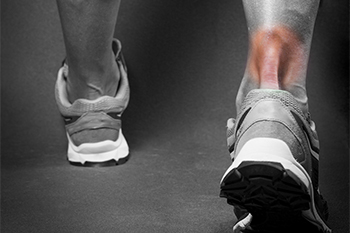October 2024
Causes of Achilles Tendinopathy

Achilles tendinopathy is a an injury that affects the Achilles tendon, which connects the calf muscles to the heel bone. This ailment typically arises from overuse or repetitive stress on the tendon, often seen in athletes who engage in activities like running or jumping. It can also develop from sudden increases in physical activity or improper footwear. Symptoms usually include pain and stiffness along the back of the heel, which may worsen with activity and improve with rest. The pain is often felt in the lower part of the calf or directly above the heel. Swelling and tenderness in the affected area are also common. If you have endured an Achilles tendon injury, it is suggested that you visit a podiatrist for a proper diagnosis to determine the type of injury and offer appropriate treatment solutions.
Achilles tendon injuries need immediate attention to avoid future complications. If you have any concerns, contact one of our podiatrists of Central Ohio Comprehensive Foot Care. Our doctors can provide the care you need to keep you pain-free and on your feet.
What Is the Achilles Tendon?
The Achilles tendon is a tendon that connects the lower leg muscles and calf to the heel of the foot. It is the strongest tendon in the human body and is essential for making movement possible. Because this tendon is such an integral part of the body, any injuries to it can create immense difficulties and should immediately be presented to a doctor.
What Are the Symptoms of an Achilles Tendon Injury?
There are various types of injuries that can affect the Achilles tendon. The two most common injuries are Achilles tendinitis and ruptures of the tendon.
Achilles Tendinitis Symptoms
- Inflammation
- Dull to severe pain
- Increased blood flow to the tendon
- Thickening of the tendon
Rupture Symptoms
- Extreme pain and swelling in the foot
- Total immobility
Treatment and Prevention
Achilles tendon injuries are diagnosed by a thorough physical evaluation, which can include an MRI. Treatment involves rest, physical therapy, and in some cases, surgery. However, various preventative measures can be taken to avoid these injuries, such as:
- Thorough stretching of the tendon before and after exercise
- Strengthening exercises like calf raises, squats, leg curls, leg extensions, leg raises, lunges, and leg presses
If you have any questions please feel free to contact one of our offices located in Delaware and Westerville, OH . We offer the newest diagnostic tools and technology to treat your foot and ankle needs.








